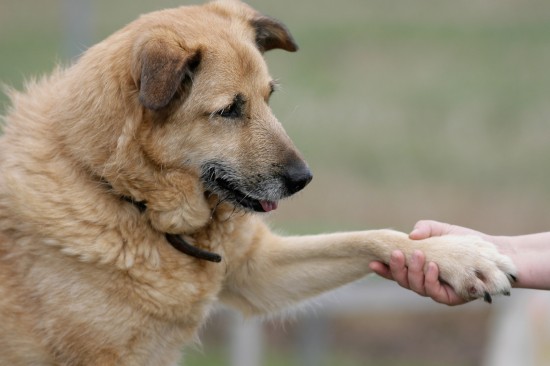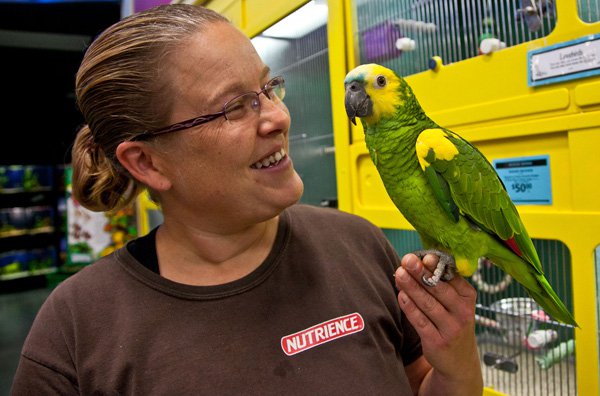

There is a huge world of difference between simply surviving and truly living, and this is what we generally refer to as quality of life.
Quality of life is what makes life worth living, and it means not only being physically alive in itself, but how worthwhile and enjoyable or otherwise that life is; for instance, if a dog is in constant, severe pain, has very limited mobility, cannot eat or drink properly and is generally unhappy, their quality of life would be said to be poor.
Particularly in the case of older dogs, dogs with health conditions or when considering the viability of a surgery or veterinary procedure, quality of life is the most important factor to consider. This is the scale that owners and vets use together to decide if a treatment will be beneficial to the dog, or not worth the pain and recovery, and to decide if an older dog whose health is failing should really be put down as the kindest course of action.
Assessing your dog’s quality of life is not as simple as filling out a form of tick boxes with a binary yes or no result, but you can build up a picture of your dog’s quality of life by considering a range of different factors in combination.
In this article, we will look at the different factors to take into consideration when assessing your dog’s quality of life. Read on to learn more.
Pain is one of the most important factors to consider when establishing your dog’s quality of life, and while dogs can and often do retain a good quality of life even when dealing with pain or discomfort, exactly how severe it is and if anything can be done to relieve it are very important considerations.
How much pain your dog might be in and how this affects their day to day life, if pain can be managed, and if any form of treatment or medication may help to ease pain or discomfort are all factors to consider.
Dogs in good health are generally highly enthusiastic about food, and being able to eat normally and enjoy their meals is one of the best indicators of a good quality of life. If your dog has problems eating normally, a loss of appetite or requires supplementary nutrition or feeding, these things can all severely impact on your dog’s wellbeing.
Being able to retain hydration naturally is of course vital for life, and if your dog is unable to drink unaided or needs to be administered with supplemental fluids on a permanent basis, quality of life will of course be affected. Some medical conditions require the supplemental administration of fluids at home now and then, but if your dog is not able to drink normally or take care of their core hydration requirements on their own, you should consider how this impacts upon their quality of life.
While dogs are not the most fastidious of animals when it comes to their general cleanliness and many dogs are more than happy getting into a mess, nevertheless, there are some basics of general condition and hygiene that affect quality of life.
If your dog is unable to go to the toilet on their own without problems or regularly cannot or does not try to make it outside to do their business, and if their coat is dull and smelly, your dog’s general condition may be contributing to a poor quality of life.
Aging in general and various health conditions can affect your dog’s ability to keep mobile, and many dogs are not as fit as they used to be, and may lead a more sedentary lifestyle quite happily. But can your dog move about on their own fairly comfortably, and get up and down from sleep without serious pain or problems? If they are virtually unable to move around without pain or problems, their quality of life will likely be poor.
Obviously you cannot talk to your dog about what is going on with them and get their consent and understanding for what is ailing them, but your dog’s general memory and relationship with you should remain relatively good to maintain a good quality of life. Even if your dog is physically relatively fit, brain aging and conditions such as canine dementia can lead to your dog not recognising you, forgetting learned skills, and generally, feeling distressed and confused, which can lead to a poor quality of life.
How any given dog responds to any given situation, such as pain, illness, surgery or recovery will vary from case to case, and some dogs can go through an awful lot while still remaining fairly upbeat. Others may be apt to become stressed and depressed very easily, and maintaining a basic level of happiness and joy in life is one of the most important factors in determining a good quality of life.
If your dog is still cheerful, pleased to see you and can raise a wag for you, they will be much better equipped to deal with problems than a dog that becomes depressed and morose.
 Ten Important Questions To Ask When Buying Or Adopting An Adult Dog
Ten Important Que
Ten Important Questions To Ask When Buying Or Adopting An Adult Dog
Ten Important Que
 Find the Best Ulcer Treatments For Horses
Find the Best Ulcer Treatments For Horses
Equi
Find the Best Ulcer Treatments For Horses
Find the Best Ulcer Treatments For Horses
Equi
 Are West Highland Terriers Good With Children?
Are West Highland
Are West Highland Terriers Good With Children?
Are West Highland
 Why Do Dogs Lick Other Dogs Or People On The Mouth?
Why Do Dogs Lick
Why Do Dogs Lick Other Dogs Or People On The Mouth?
Why Do Dogs Lick
 Pets & Autistic Children - A Great Combination
Pets & Autistic C
Pets & Autistic Children - A Great Combination
Pets & Autistic C
Copyright © 2005-2016 Pet Information All Rights Reserved
Contact us: www162date@outlook.com